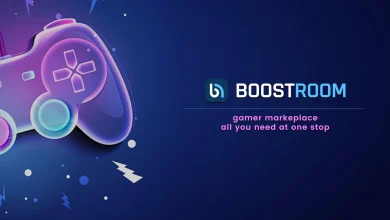The Power of Persuasion: Boosting Your Lead Generation Strategy

Lead Generation is one of the most vital components of any successful marketing strategy. It’s the process of attracting potential customers, nurturing them, and ultimately converting them into paying clients. But generating leads isn’t just about collecting email addresses or getting clicks—it’s about persuasion. The power of persuasion lies in your ability to connect with potential customers, understand their needs, and lead them through the buying journey in a way that feels natural and compelling.
In this blog post, we’ll explore the psychology behind persuasion and how you can use it to boost your lead generation strategy and convert prospects into loyal customers.
Understanding Persuasion in Lead Generation
Persuasion is the art of influencing someone to take a specific action. When applied to lead generation, it’s about encouraging prospects to move from awareness to engagement, and eventually, to conversion. While there are many tactics you can use to boost your lead generation efforts, effective persuasion often relies on the principles of psychology.
Let’s break down some key psychological principles of persuasion that can be applied to lead generation.
1. Reciprocity: Give Before You Get
One of the most powerful principles of persuasion is reciprocity—the idea that people are more likely to respond positively to your request if you’ve already given them something of value. This principle is deeply rooted in human nature. When someone does something for us, we naturally feel an urge to return the favor.
In the context of lead generation, you can apply reciprocity by offering something of value to your audience before asking for their contact information. Here are a few ideas:
- Free Resources: Offering a free eBook, checklist, or guide that helps solve a problem your audience faces can be a great way to attract leads. Once you’ve provided value upfront, they’re more likely to give you their email address in exchange.
- Discounts or Free Trials: Offering a limited-time discount or a free trial of your product or service is another great way to apply reciprocity. This reduces the perceived risk for the customer, making them more likely to give you their information.
- Webinars and Workshops: Hosting a free webinar or a live demo that offers valuable insights can engage prospects and encourage them to take the next step in your sales funnel.
By giving before asking, you build trust and goodwill, which can increase the likelihood of leads taking action.
2. Social Proof: The Influence of Others
Humans are social creatures, and we tend to make decisions based on what others are doing. This principle is known as social proof, and it’s an incredibly powerful tool in lead generation. Social proof is the idea that people are more likely to engage with something if they see that others have done the same.
Incorporating social proof into your lead generation strategy can be a game-changer. Here’s how you can do it:
- Customer Testimonials: Showcase testimonials from happy customers on your website or landing pages. Real-world feedback builds trust and reassures prospects that your product or service is worth investing in.
- Case Studies: Share success stories of how your product or service has helped other customers solve their problems. Case studies provide tangible evidence of your value proposition and build credibility.
- Social Media Mentions: Display any social media mentions or user-generated content on your site. If potential customers see that others are engaging with your brand online, they’re more likely to trust you.
- Trust Badges: Displaying certifications, industry awards, or partner logos on your landing pages can help build trust and demonstrate that your company is reputable and reliable.
By leveraging social proof, you can influence prospects to trust your business and take the next step toward conversion.
3. Scarcity: Create a Sense of Urgency
People are naturally drawn to things that are perceived as rare or in limited supply. This principle of persuasion, known as scarcity, plays on the fear of missing out (FOMO). When we believe that something is in short supply, we feel more compelled to act quickly before the opportunity is gone.
Incorporating scarcity into your lead generation strategy can help motivate prospects to take immediate action. Here are some ideas:
- Limited-Time Offers: Offering a time-sensitive discount or bonus for those who sign up or make a purchase within a certain period creates urgency. Make sure to highlight the deadline prominently on your landing page and in your emails.
- Exclusive Access: Position your lead magnet, webinar, or content as “exclusive” and only available to a limited number of people. This can increase the perceived value of your offer and encourage immediate sign-ups.
- Countdown Timers: Adding a countdown timer to your landing pages or emails can amplify the urgency. Prospects are more likely to convert when they see that time is running out.
By making your offers seem scarce or time-sensitive, you can prompt leads to act quickly and secure their information before the opportunity expires.
4. Authority: Establish Your Expertise
People are more likely to follow the advice or take action when it comes from an authority figure or expert in a given field. This principle, known as authority, is key to persuading leads that your product or service is worth their attention.
Here’s how you can establish authority and use it in your lead generation strategy:
- Share Expert Content: Publish blog posts, articles, or videos that showcase your expertise in your industry. When people perceive you as a knowledgeable authority, they’re more likely to trust your business and become leads.
- Guest Posts & Speaking Engagements: Writing guest posts on reputable websites or speaking at industry events can help you establish credibility and authority in your field.
- Certifications and Accreditations: If you have any certifications, awards, or industry accreditations, make sure to prominently display them on your website. These badges of credibility can influence leads to trust your brand.
By showcasing your expertise, you can make leads more confident in your ability to solve their problems and more likely to convert.
5. Commitment: Small Steps Lead to Big Wins
The principle of commitment is based on the idea that once people commit to something, they’re more likely to follow through with larger commitments. This can be applied in lead generation by encouraging small, incremental commitments that eventually lead to bigger actions.
Here’s how to use the commitment principle:
- Micro-Commitments: Start by asking for small commitments. For example, you can ask visitors to download a free resource or sign up for a newsletter. Once they’ve made this small commitment, they’ll be more likely to take the next step, such as requesting a demo or purchasing your product.
- Progress Indicators: Show prospects their progress toward a goal (such as filling out a lead capture form) through progress bars or checklists. This can encourage them to complete the full form or take the next action.
By getting leads to make small commitments, you increase the chances that they’ll take the bigger step of converting into a customer.
6. Emotion: Connect on a Deeper Level
Finally, don’t forget the power of emotion in persuasion. People often make decisions based on their feelings, and emotions drive action. In lead generation, connecting with your audience on an emotional level can make your messaging more compelling and your offers more irresistible.
Here’s how to tap into emotion:
- Storytelling: Use storytelling to connect with your audience. Share stories about how your product has changed lives or helped customers overcome challenges. Emotionally compelling stories create a deeper connection and make your offer more memorable.
- Empathy: Show that you understand your audience’s pain points and that you genuinely care about solving their problems. This empathy helps to build trust and persuade leads to engage with your brand.
By tapping into your audience’s emotions, you can create a deeper, more persuasive connection that leads to conversions.
Conclusion
In lead generation, the power of persuasion is not just about convincing someone to click a button—it’s about building a relationship, establishing trust, and guiding potential customers through a journey that feels natural and compelling. By leveraging psychological principles such as reciprocity, social proof, scarcity, authority, commitment, and emotion, you can craft a lead generation strategy that not only attracts leads but also converts them into loyal customers.




